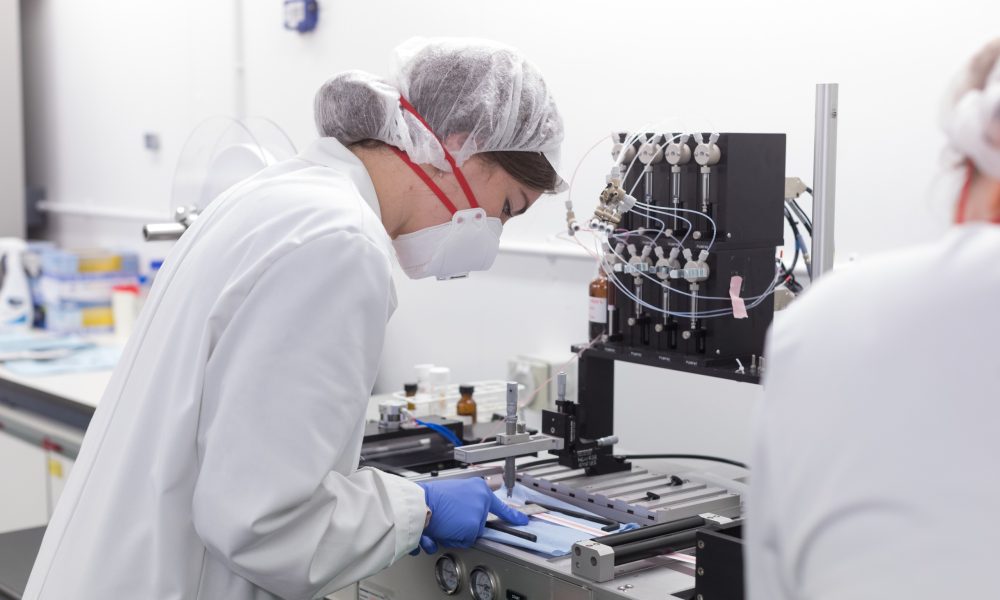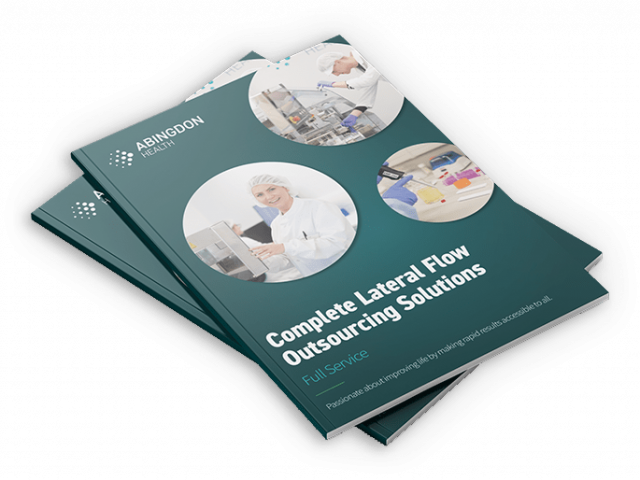Avoiding Common Pitfalls That Derail R&D Projects

What Are Lateral Flow Tests?
Simple Devices, Backed by Complex R&D
Failure to Plan Is Planning to Fail…
Key Takeaways
Unfortunately, many promising R&D projects hit roadblocks, leading to wasted time, money, and lost opportunities. From unclear goals to poor communication, several common pitfalls can derail even the most innovative of ideas from turning into reality.
In this blog, lateral flow subject matter experts in the senior team at Abingdon Health – our Head of Sales, COO, CTO & Head of QARA – delve into these hazards, drawing on their collective career experiences, exploring the causes, consequences, and, most importantly, how to avoid them altogether.
What Are Lateral Flow Tests?
Lateral Flow Tests (LFTs) are deceptively simple devices that have revolutionised rapid diagnostic testing in the last 50 years. They operate on the principle of capillary flow, in which a liquid sample migrates along a porous strip. Embedded within this strip are strategically placed reagents that interact with the target analyte if it’s present in the sample. As the sample moves along the test strip, these interactions often involve antibodies conjugated to colourful nanoparticles, like gold. The presence or absence of coloured lines in specific test zones accurately indicate a positive or negative result, typically within minutes. There is a very informative video on our website explaining in more detail how lateral flow technology works, if you’d like to know more.
Simple Devices, Backed by Complex R&D
While the basic concept of lateral flow technology is straightforward, the research and development (R&D) behind LFTs is understandably complex. Sensitivity and specificity must be rigorously optimised to ensure accurate results. This includes careful selection of antibodies, their conjugation chemistry, and the precise design and verification. Additionally, the composition of the membrane, the layout of capture zones, and the addition of buffers all play critical roles in influencing sample flow and test performance. Furthermore, factors like shelf-life, test usability, and potential for manufacturing at scale all need meticulous attention during development, along with considerations of regulatory requirements linked to the intended use of the product. The intricate interplay of these variables makes R&D for LFTs a demanding exercise in scientific precision and engineering.
Failure to Plan Is Planning to Fail…
When comparing the notes from our expert panel, it wasn’t surprising to find common themes in the examples shared. From issues that cropped up in the early days of their careers that provided key learning and continuous improvement opportunities, to feedback shared by clients who have hit the wall on and are looking to get their projects back on track, to horror stories on project and cost creep driving innovative projects into the ground before they’ve even passed proof of concept phase or needed full reworking to have a chance at gaining regulatory approval for their intended market because of poor processes and quality management standards, they’ve seen it all!
The lateral flow R&D process holds immense potential to transform concepts into groundbreaking – and sometimes life-saving – products. However, navigating this exciting journey requires careful consideration of potential pitfalls that can lead to wasted resources, delayed timelines, and even project failure.
- User-Centered Design: Overlooking user needs and neglecting to integrate the “Voice of Customer” (VoC) can lead to products that miss the mark. Conducting market surveys, focus groups, and design research activities are essential for understanding user interaction, perception, and addressing their specific needs throughout the development process.
- Design for Manufacture (DFM): Designing solely for functionality without considering manufacturability can create significant hurdles later. Areas like housing closures, strip sizes, and drying times, if not designed with scalability in mind, can lead to unexpected challenges and delays when transitioning from prototype to routine manufacture.
- Holistic View: Focusing solely on technical development without considering the broader context of the project is a recipe for trouble. A holistic approach that encompasses market analysis, regulatory requirements, and end-user application methods from the outset helps identify potential issues early on, preventing minor roadblocks from snowballing into significant problems like regulatory hurdles, delayed product launches, or product recalls.
- Supply Chain Management: Underestimating the complexities of supply chain management can lead to unforeseen delays and cost escalations. Meticulous planning is required to understand and manage lead times, material availability, and volume capabilities to ensure a smooth flow of resources throughout the development process. It’s also important to ensure that appropriate characterised samples are available for development.
- Technical and Clinical Validation: While scientific and clinical functionality are paramount, neglecting market and regulatory requirements can render a product unmarketable or even non-compliant. Ensuring the product adheres to both scientific principles and relevant regulatory requirements is crucial for successful commercialisation and uptake.
- Quality Management: Implementing and following a robust quality management system throughout the development and manufacturing process is essential for mitigating risks and ensuring consistent product quality. This not only safeguards product integrity, but also fosters trust and confidence among consumers and regulatory bodies.
- Risk Management: A systematic approach to risk management, adhering to international standards like ISO 14971, is crucial for identifying potential hazards, assessing their associated risks, and implementing effective control measures. This proactive approach helps mitigate unforeseen challenges and ensures projects stay on track.
- Iterative Testing and Feedback: Continuous testing and gathering feedback at each stage of development are both vital checkpoints for early identification and rectification of issues. By incorporating user feedback and addressing emerging challenges throughout the R&D process, developers can refine their product and increase the likelihood of success.
Key Takeaways:
By recognising and addressing these common pitfalls, R&D projects can navigate the path to innovation with greater efficiency, minimising risks and maximising the potential for successful product development.
Using every experience as an education opportunity and learning from the mistakes of others, you can navigate the exciting world of R&D with confidence and ensure your next groundbreaking project reaches its full potential.
Ensure you make smart decisions, including having fully defined performance specifications at the start of the project, implementing robust quality and risk management approaches from the outset, and selecting a reputable partner with strong experience – and checking their credentials for yourself – can make all the difference.
Decades of experience in taking tests from concept to commercialisation has led to Abingdon Health establishing effective processes that ensures efficient and cost-effective development, technical transfer and scale-up. Abingdon adheres to Good Manufacturing Practice to ensure tests are manufactured in a consistent and robust manner batch in, batch out. Contact the Abingdon team using the form below to see how we can help take your test from R&D into reliable manufacture and commercial success. Also, discuss our value-added services such as regulatory and commercial support that provides a de-risked and streamlined route to market.

